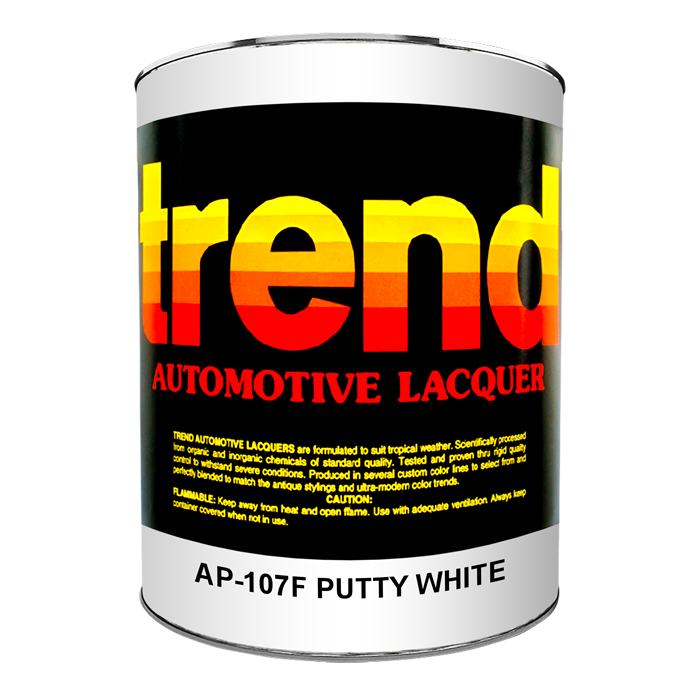Trend Lacquer Putty
Nitrocellulose-Based Putty
Specifications
- USE
For metal and wood surfaces
- Type
Solvent-Based
- COVERAGE
25-30 square meters per 4 liters
- Quantity
1-Liter
4-Liter
- REDUCTION
Use as packaged.
- Product Features
- Product Instructions
- Storage and Handling
- Safety Precautions
Crack-Bridging
Repairs Surface Imperfections
SURFACE PREPARATION:
Metal Surface: Ensure that metal surfaces are clean and dry, free from rust, oil, grease, dirt, dust, and other foreign matters.
Wood Surface: Rough wood should be sanded and dusted off. Putty hairline cracks in wood and other minor surface defects.
APPLICATION SYSTEM
New Metal and Wood Surfaces
1st Coat: Lacquer Primer
2nd Coat: Lacquer Putty
The surface should be primed before application and after sanding the applied putty. Do not apply directly to the bare metal surface. Metal must be primed or surface coated and sanded. Apply the putty using a squeegee or putty knife. For best results, apply in several thin coats with five-minute intervals in between coats.
3rd Coat: Lacquer Primer
Topcoat: Automotive Lacquer Topcoat
Repainting Work:
1. Remove the defective paint.
2. Strip off the badly-conditioned old lacquer finish.
3. Prepare to clean and dry before finishing as indicated for "New Metal and Wood."
4. If the old lacquer finish is in good condition, sand and dust off the surface.
5. Apply the required finish coats of Automotive Lacquer.
Keep the container dry and tightly closed in a cool and well-ventilated place.
Opened containers must be resealed carefully and kept upright to prevent leakage.
Always keep in containers with the same material as the original one.
Observe label precautions.
Contain and collect spillage with a non-combustible absorbent material like sand.
For more information about the safety precautions of this product, please request for the safety data sheet.


